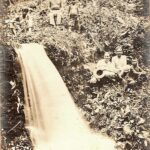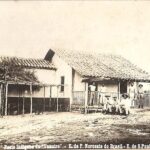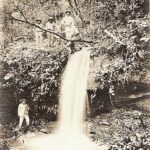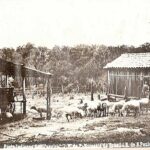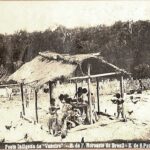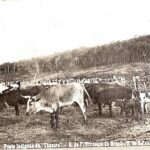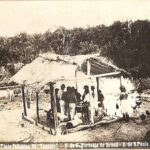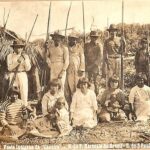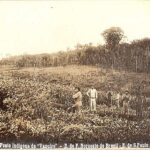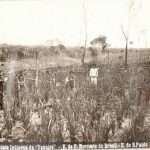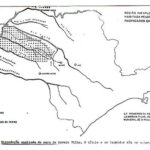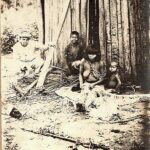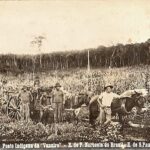


The Índia Vanuíre Historical and Pedagogical Museum, in Tupã (SP), is an institution of the Secretariat of Culture, Economy, and Creative Industries of the State of São Paulo, managed by ACAM Portinari – a Social Cultural Organization. It was established in 1966 by Luiz de Souza Leão in the context of the implementation of the network of Historical and Pedagogical Museums of the State of São Paulo.
We attribute to Luiz de Souza Leão the definition of the two thematic axes of the Museum – local history and ethnography. Today, after a museological update, the axes cross to put in doubt the territory were the institution is inserted, explore the construction of its inhabitants’ memories, either Indian or not, and play the social and educational roles within democratic and intercultural principles.
Índia Vanuíre Museum is a local institution with a global dialogue, contributing with its specific and unique matters. It accomplishes through its several curatorship actions, highlighting its communication through exhibits and educational actions.
The museum is sheltered in its own building built by its founder. After remodeling the building and a museological re-qualification, the museum reopened in 2010 with a modern and long-lasting exhibit that highlights the museum’s intercultural calling and its role as the promoter tolerance.
The Historical and Pedagogical India Vanuíre Museum’s mission is to preserve, valorize and communicate historical heritage and indigenous ethnographic heritage, in particular the legacy of peoples in the west of São Paulo, and to promote critical reflection about human values and citizenship taking into account different cultures and interactions among different groups in society.
The Historical and Pedagogical India Vanuíre Museum aims to be recognized for quality in preservation and communication of indigenous historical and ethnographic collections and to be relevant as a reference center, based on cultural heritage, for different groups of society.
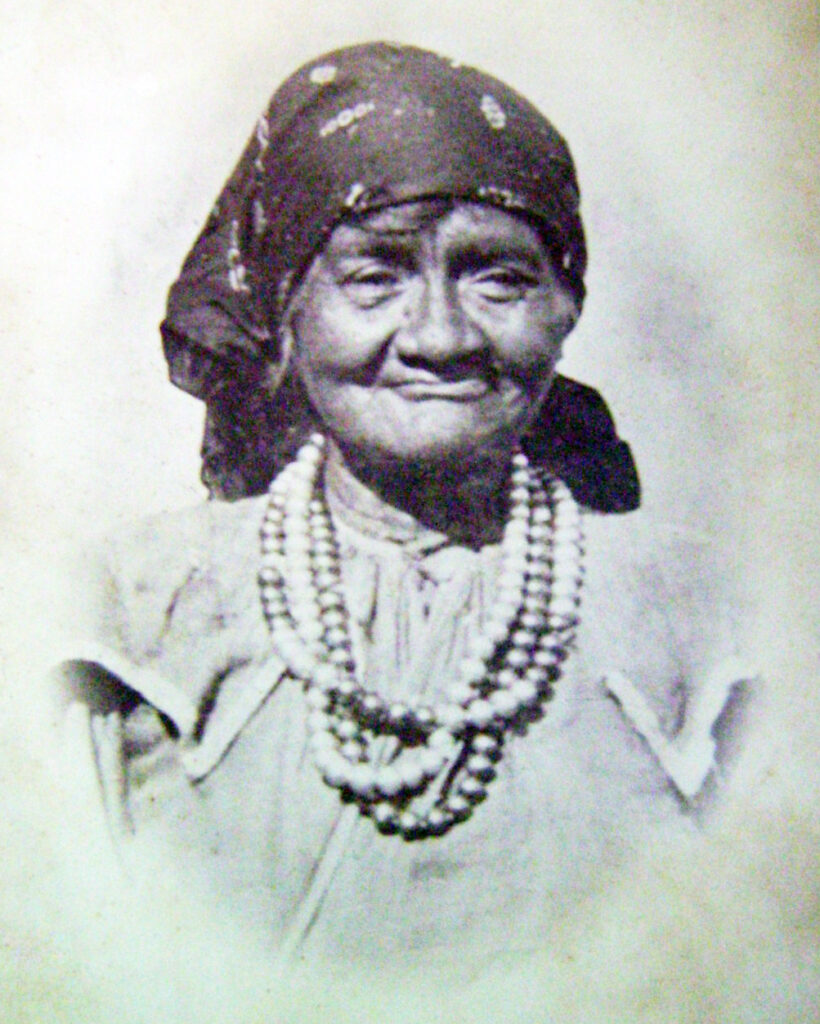
In the beginning of the XX century, the coffee march to the west of São Paulo brought violent consequences to the Kaingang that occupied that territory. There would be constant massacres of entire villages and great negative divulgement of the Kaingang in the press, aiming at the reduction of the value of the land dominated by the Indians to value it later for those that bought it. The extermination was not concluded thanks to the actions of the SPI – Indian Protection Service.
Since then, Índia Vanuíre has been part of the imaginary of the people in the region and was considered a heroine. The legend goes that Vanuíre used to stand on a ten-meter-tall Cariniana (jequitibá) trunk where she would stay from daybreak to sunset chanting peace songs.
Actually, Vanuíre was a Kaingang brought from Campos Novos do Paranapanema (currently, Campos Novos Paulista) by the SPI as a strategy to attract the Kaingang to the region so they would form villages. Thus, she worked as an interpreter, as did others. She symbolizes the end of the conflicts in 1912, which resulted in the settlement of the Kaingang in two restricted areas, presently the Icatu and Vanuíre Indian Lands. Indian Vanuíre passed away in 1918 in Icatu, Braúna, where she spent her last days.
Many consider Vanuíre the great “pacifier”, an image that the museum wants to deconstruct, since it reinforces the negative view of the Kaingang implanted a century ago. The museum respects the symbolism involving this character, but acts critically and historically.
In the past, there was a great flood that gradually submerged the entire land inhabited by our ancestors. Just the top of the Crinjijimbé mountain range emerged from the water. The Caingangues, Cayrucrés and Camés swam in its direction taking pieces of logs on fire in their mouths. The Cayrucrés and the Kamés got tired and drowned; their souls went to live in the center of the mountain range… After the water dried, the Caingangues established themselves around Crinjijimbé. The Cayrucrés and Camés, whose souls had gone to live in the center of the mountain range, started making way inside it; after a lot of work, they came out through two trails (Borba 1908:20-21).
In 1882, Telêmaco Borba collected the myth of the Kaingang people’s origin. The myth narrates the story of the mythological brothers Kamé and Kairu, who after the great flood came out from inside the Crinjijimbé mountain range. Among many symbolic aspects of the Kaingang, the myth of their orrigin still supports a lot of this culture’s tradition. The people understand that everything that exists on Earth – plants, animals and everything else, and even out of it – the moon, the sun, the stars – was created by one of the mythological brothers. The “System of Halves” exists so there is a balance and continuous reciprocity between the two clans.
The deep respect towards the dead and their esteem towards the lands where they’re bellybuttons are buried as soon as they’re born are unquestionable expressions of the cosmology-structuring value to these Indians.
Today, the Kaingang live in over 30 Indian Lands in the state of São Paulo, Paraná, Santa Catarina and Rio Grande do Sul and throughout the east of the Argentinian Missions. The Kaingang language belongs to the Jê family from the macro-jê macro-linguistic branch, divided by the SIL (Summer Institute of Linguistics) linguist and missionary Ursula Wiesemann into five dialects that differ in several parts of their structure, with the phonological ones as the most visible.
The Kaingangs arrived in the south and southeast of Brazil 3,000 years ago. These people’s history in São Paulo can therefore be told from that date. In the western São Paulo plateau they occupied the highest lands in the bush-forest fields, between the rivers Tietê and Paranapanema, valleys and ridges, at the margins of the Tietê, do Peixe, Aguapeí/Feio and Paranapanema rivers.
One thousand five was the year when the conflict between the Kaingang and non-Indians intensified in the west of São Paulo due to the beginning of the construction of the Brazilian Northeastern Railroad. The Kaingang defended the territory where they lived and the non-Indians fought for the private ownership of the lands motivated by the expansion of the coffee crops. The Indians destroyed the railroad tracks being built to scare them. The non-Indians hired trackers to eliminate the Kaingang using guns or contamination by diseases, which cause massed deaths. In 1910, the Indigenous People Protection Service (SPI) was created by the government and in 1911 a camp is settled in Ribeirão dos Patos, and this was the operation base of the SPI in that region during this period. The work of “pacification” between the Kaingang started in 1912, and the last Kaingang group was “pacified” in 1915. In 1916, the group was sent to Icatu Indigenous Post, place acquired by SPI in the previous year, and in 1917, due to disagreements between the Kaingang groups, the Indigenous Vanuíre Post was created.
It is estimated that 90% of the Kaingang population was exterminated between 1905 and 1921. In 1921, 173 individuals were counted between the Icatú and Vanuíre Posts.
They were called Aimoré by the Tupi and Botocudo by the Portuguese in the XVIII century. They called themselves Grén or Krén. Today, they identify themselves as Borun, the essence of the being, Borun from the Watu. To the Brazilian society they are the Krenak, the last survivors of the “Botocudo” nation.
The first news about the Krenak date back to the XVI century. Their original territory was the Atlantic Forest in the Low Recôncavo Baiano. In the XIX century, they went south, reaching the Doce River in Minas Gerais and Espírito Santo.
There were several attempts to catechize and “pacify” them for the Krenaks to leave the margins of the Doce River. They became a nuisance in their own territory coveted for exploration. Since they resisted, they were the victims of the “Just War”. With the construction of the Vitória-Minas railroad in the end of the XIX and beginning of the XX century, they were forced to leave the lands in Vale do Rio Doce.
In around 1911, the Krenak were grouped by the Indian Protection Service (SPI) in an area close to Resplendor. Two attraction Posts were created, Pancas and Guido Marliére, the present Krenak village. That way, their lands were free for economic expansion.
In 1920, the Minas Gerais government destines a part of the original Krenak territory to themselves. The demarcation was done in 1923, after the massacre of the Kuparak, a “Botocudo” group. The four thousand hectares donated continue being coveted by non-Indians. To have an idea, it is estimated that in the beginning of the XX century there were 5 thousand Krenaks, and in the 1920’s there were 600.
In 1953, they were transferred to the Maxacali Post or went to other places. Returning to the Guido Marliére Indian Post, the Krenak IP, in 1959, they found their land occupied by the Forest Police and farmers.
In 1970, the Krenak land ownership reintegration began. Although their rights were defined by Justice, in 1973 they were transferred to Guarani Farm in Carmésia. Many left their original territory in handcuffs and were treated as transgressors and social misfits. In the 1980’s, helped by supporters of the Indian culture, they returned to their lands occupying only 44 hectares of what the Government had donated to them in 1920.
Today, they live in reduced areas re-conquered with great difficulties in Minas Gerais, Mato Grosso and São Paulo.
The Krenak spoke the same language, despite the significant dialect variations that worked to outline differences between the several groups they composed. The Krenak belong to the linguistic group Macro-Jê, speaking a language called Borun. Therefore, among them, they are called Borun and the Borun do Watu are the Krenak from Resplendor, MG.
Due to their dispersion history, they are present in several Indian areas, but one of the most important groups is in Arco-Íris (SP), where they live with the Kaingang in the Vanuíre Indian Land.
To know more:
RIBEIRO, Darcy. The Indians and civilization. The integration of the Indian populations in modern Brazil. 2nd ed. Patrópolis: Vozes, 1977.
Indian People Encyclopedia. Social-Environmental Institute. http://pib.socioambiental.org/pt/povo/kaingang
MELATTI, Delvair, Montagner. Aspects from the social organisation of the Kaingangs from São Paulo. Funai: General Department of Communitarian Planning/Studies and Research, 1976.
EIndian People Encyclopedia. Social-Environmental Institute. http://pib.socioambiental.org/pt/povo/krenak
A few photos of the Vanuíre Indian Post throughout time.
